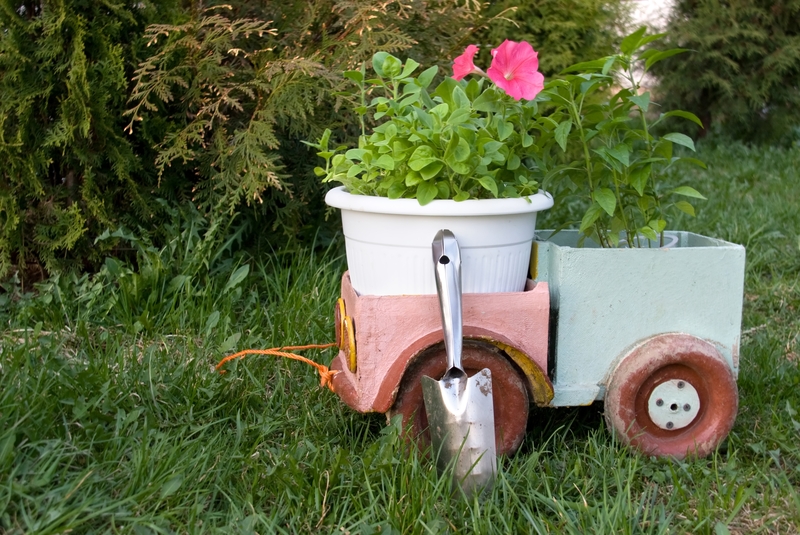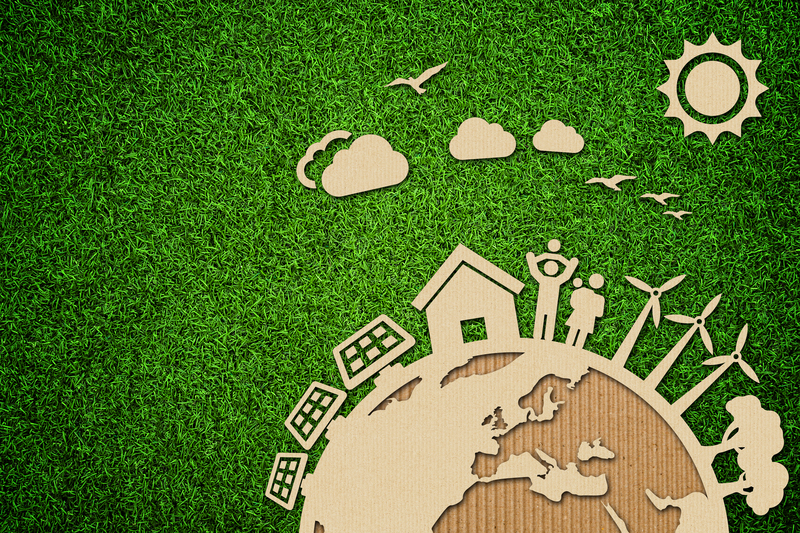Stopping Microplastic Pollution: Our Collective Responsibility
In today's rapidly advancing world, the perils of microplastic pollution have become a major environmental concern. These tiny plastic particles, often invisible to the naked eye, pose significant threats to marine ecosystems, wildlife, and human health. As responsible stewards of the planet, it is our duty to understand the impact of microplastics and take actionable steps to curtail their spread. This comprehensive article delves into the causes, consequences, and practical solutions for stopping microplastic pollution.

What Are Microplastics?
Microplastics refer to plastic fragments less than five millimeters in diameter. They can be categorized into two main types:
- Primary microplastics: Manufactured at a small size to serve specific purposes, such as microbeads found in personal care products, and industrial pellets.
- Secondary microplastics: Result from the breakdown of larger plastic waste, like bottles and packaging, due to exposure to sun, wind, and water.
Microplastic contamination is now present in oceans, rivers, soils, the atmosphere, and even our bodies. It is a global issue requiring immediate attention and coordinated actions.
The Sources of Microplastic Pollution
To effectively reduce microplastic pollution, it's crucial to recognize where microplastics originate:
- Synthetic textiles: Fibers shed during laundering synthetic clothing, such as polyester and nylon, contribute substantially to waterborne microplastics.
- Personal care products: Many exfoliating scrubs, toothpastes, and cosmetics contain non-biodegradable plastics known as microbeads.
- Tire wear: As vehicles travel, their tires break down and release tiny rubbery particles into the environment.
- Industrial processes: Plastic pellets and other byproducts often leak during manufacturing and transportation stages.
- Degraded plastic waste: Improperly discarded plastic breaks apart into smaller pieces due to natural weathering processes.
- Paint: Chipping and weathering of paints on ships, buildings, and road markings release microplastic fragments.
Understanding How Microplastics Enter the Environment
The journey of microplastic particles from their source to the environment involves multiple pathways:
- Waterways: Washed down drains or carried by rainwater, microplastics often end up in rivers and ultimately the ocean.
- Wind: Fine plastic dust can become airborne and travel great distances, settling on land and water bodies alike.
- Soil infiltration: Treated sewage sludge applied as fertilizer can transfer microplastics to agricultural lands.
- Food chain: Aquatic organisms ingest microplastics, introducing them into the food web, culminating in human consumption.
The Impact of Microplastics: Why Should We Care?
Stopping microplastic contamination is not merely an environmental agenda--it's a pressing human health and societal issue. Microplastic pollution affects us in the following ways:
- Marine and freshwater ecosystems: Fish, crustaceans, and plankton mistaken microplastics for food. Ingested plastics can cause internal injury, false satiation, and lower reproductive rates in aquatic species.
- Land animals and agriculture: Microplastics can enter terrestrial food chains via soil, livestock, and crops, posing risks to animal and human health.
- Human exposure: Recent studies reveal microplastics in drinking water, sea salt, and even the air we breathe. While research continues, potential impacts include chemical contamination, immune disruption, and more.
Addressing the problem of microplastics is vital for sustaining biodiversity, protecting public health, and maintaining ecosystem services.
Legislation and International Action on Microplastic Pollution
In recent years, governments worldwide have begun to acknowledge the magnitude of microplastic waste and legislate against its proliferation:
- Microbeads bans: Countries like the United States, Canada, and the United Kingdom have banned microbeads in rinse-off cosmetics.
- Extended Producer Responsibility (EPR): Regulations are pushing manufacturers to take responsibility for the entire lifecycle of their plastic products.
- Global agreements: The United Nations Environment Programme (UNEP) and various international treaties are mobilizing collective efforts to address marine litter and microplastic pollution on a global scale.
Although these policies mark an essential step forward, enforcement gaps and loopholes persist, signifying the need for stricter implementation and public participation.
Our Role: How Individuals Can Stop Microplastic Pollution
Combating microplastic pollution isn't just the domain of legislators and industries. Every individual can make a difference. Here are some practical strategies to help reduce your personal microplastic footprint:
1. Reevaluate Your Wardrobe Choices
- Choose natural fibers: Whenever possible, opt for clothes made from organic cotton, wool, or bamboo, which shed fewer synthetic fibers than polyester or nylon.
- Wash smarter: Use colder, shorter wash cycles and fill the load to reduce friction and fiber shedding. Consider using laundry bags or filters designed to capture microfibers.
2. Avoid Products with Microbeads
- Check the labels: When shopping for personal care products, avoid those containing polyethylene, polypropylene, or other plastic-based ingredients.
- Support sustainable brands: Choose companies that are actively excluding microplastics and prioritizing biodegradable alternatives.
3. Tackle Single-Use Plastics
- Bring your own bags, bottles, and straws: Reducing reliance on disposables minimizes the volume of plastic entering the waste stream, and subsequently, the microplastics load.
- Recycle responsibly: Ensure plastics are sorted and processed through proper recycling channels to prevent environmental leakage.
4. Support Environmental Advocacy
- Join clean-ups: Participate in local beach or river clean-ups to physically remove plastic debris before it degrades.
- Advocate for policy change: Use your voice to support legislation that restricts plastic pollution and promotes sustainable alternatives.
5. Stay Informed and Educate Others
- Share knowledge: Inform friends, family, and your community about the challenges and solutions for stopping microplastic contamination.
- Promote research: Support scientific studies and organizations dedicated to understanding and eliminating microplastic pollution.
Role of Industry and Innovation in Curbing Microplastics
The private sector is instrumental in reversing microplastic accumulation. Innovative companies are investing in:
- Developing biodegradable materials: Replacing petroleum-based plastics with compostable and natural alternatives helps break the cycle of pollution.
- Redesigning products: Safer alternatives in synthetic textiles and improved tire technologies can limit the release of microfibers and microplastics.
- Improving filtration technology: Washing machine filters, wastewater treatment upgrades, and other filtration methods can intercept microplastics before they reach natural habitats.
Consumer demand for eco-friendly products is pushing industries to embrace environmentally responsible practices--a significant stride in stopping microplastic pollution.

The Future: Promising Solutions for a Microplastic-Free World
The scientific community is advancing numerous solutions for ending microplastic pollution. Some promising developments include:
- Microplastic capture and removal: Innovative technologies like floating barriers, magnetic retrieval, and microplastic-trapping filters offer hope for large-scale clean-up.
- Policy innovation: Expanding producer responsibility, implementing deposit-return schemes, and incentivizing waste reduction are proving effective in several regions.
- Enhanced waste management: Investing in global infrastructure for efficient collection and recycling, especially in developing nations, remains critical.
- Research and monitoring: Better detection methods and tracking systems can inform policy and enable targeted interventions.
The battle against microplastic waste is ongoing, and every measure contributes to a cleaner, healthier planet.
Conclusion: Embracing Our Duty to Stop Microplastic Pollution
Stopping microplastic pollution calls for a united global effort, combining policy, science, industry, and individual action. By understanding the sources and impact of microplastics, supporting innovative solutions, and fostering greater responsibility in our daily lives, we can stem the tide of this pervasive pollutant.
Together, we can ensure a safer, more sustainable environment for current and future generations. It's not just an environmental imperative--it's our shared responsibility.